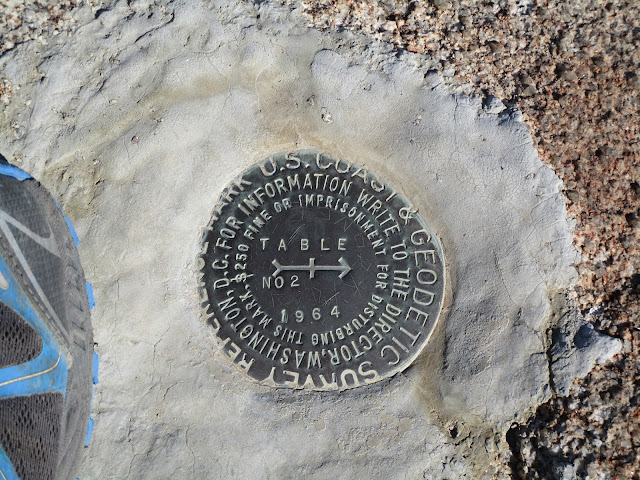Distance: 6.7 miles on trail
Summit Elevation: 3080' (Box Springs), 2559' (Table BM)
Prominence: 1160' (Box Springs), 309' (Table BM)
Elevation Gain: 1300'
Elevation Gain (in Empire State Buildings): 1.04
Round trip time: 2 hours 20 minutes
Recommended water: 40 oz.
Parking/Fees: $5 Riverside County Parks
Difficulty: Easy
Box Springs Mountain separates Riverside from Moreno Valley and rises prominently along highway 60 in the Inland Empire. On the east side of the mountain is a giant white "M", a symbol for Moreno Valley, and on the west side is a giant yellow-orange "C", a symbol for UC Riverside. Both can be seen from the highway, but the C is only visible briefly. The park is managed by the County of Riverside. Here is a trail map. I chose to start at the main parking lot on the Moreno Valley side. To get there, take highway 60 east from Riverside, take the Pigeon Pass Road exit and turn left (north), then follow it west until it turns into Box Springs Mountain Road and curves back west. Continue past where it turns into a dirt road and ends at the day use dirt parking lot. The dirt road is mellow and any car should be able to make it to the parking lot. There is a $5 parking fee with a single pay slot at the entrance to the lot, no envelopes, no credit cards, and it appears to be on the honor system (you can't get a parking receipt to prove you paid). There is a portable toilet at the lot and a few picnic tables. To avoid the fee, there are several free access trails to the mountain, including the Two Trees Trail and the M Trail.
From the parking lot, I started south past a gate along the wide Box Springs Mountain Road. From the start, you can spot some clusters of radio towers along the ridge. The first couple of clusters are not the high point. As I was catching up to a couple heading the same way, I saw them stop and start to take pictures of the road. When I got there, I saw it was a Western Patch-Nosed snake having a large lizard breakfast. She may have bitten off more than she could chew. I took a photo, then continued past them to the radio cluster at the high point. The wind was blowing like crazy, kicking dirt in my face and knocking me sideways. I turned my hat backward to try to keep it from blowing away. I hunted for a benchmark at the top of Box Springs Mountain, but found nothing but some graffiti. Eventually, I gave up on the benchmark and continued past the high point to the end of the ridge to get a close up view of the giant "M". I jogged most of the way back to the parking lot, passing a few hikers and one biker to get ready for the second part of the hike. The round trip for this segment was 5 miles and took about 75 minutes.
Table BM looked fairly close to the parking lot, but in the opposite direction of Box Springs Mountain. I could see a trail heading in that direction from the road, so I took it. The unsigned trail aimed straight for the summit. Along the way were many boulders, most with graffiti. It's a sad reality, but not unexpected for a mountain in the middle of Inland Empire sprawl. The high point was a large class 2 block and it looked like the benchmark had been dug out of the soft sandstone. Someone carved a heart into the top. I went over the summit block and onto a table-like boulder, also decorated with graffiti. Back on the summit, I noticed what looked like a marker on the top of a nearby boulder. The boulder with the benchmark was about 10' with an 8" vertical crack. I tried the crack a couple of times without luck, then found a different class 3 way up using sloper holds a little to the left. After getting down, I tried the crack again, finding that a foot jam was all I needed to get started. I ended up climbing the crack twice. The intact benchmark on the boulder was a reference mark pointing to the high point with the missing benchmark. I hit a couple of other boulders on the way back that proved to be easier. It was a short, but fine morning of urban hiking.

Table Reference Mark #2 on top of the boulder,
probably still intact because it's not as easy to climb as the true summit

























































